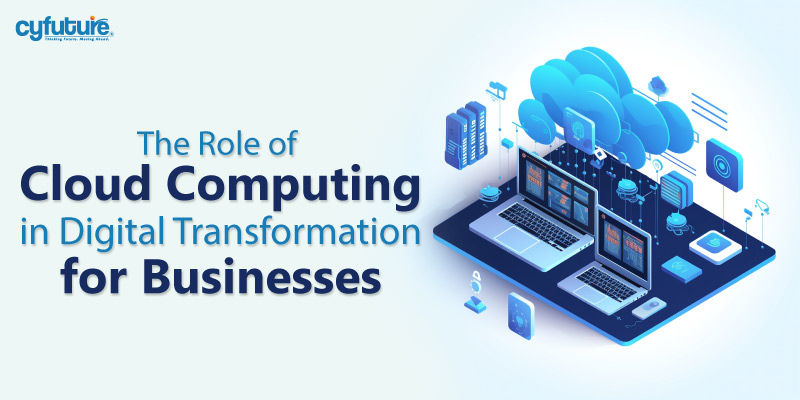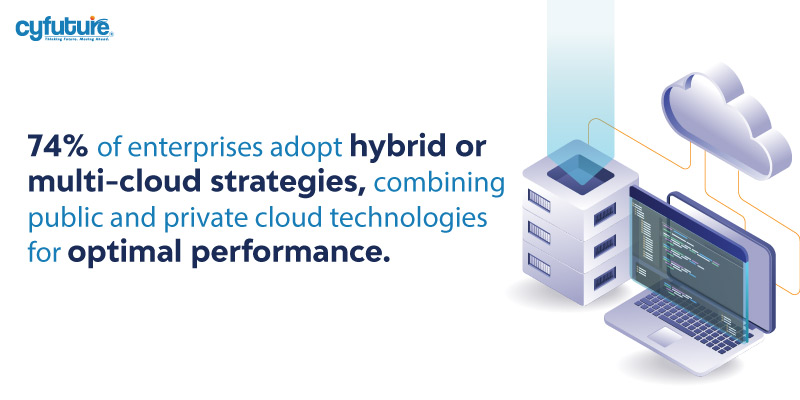-
Get Cloud GPU Server - Register Now!
Toggle navigation

The most important resource for businesses nowadays is cloud computing, thanks to the fast-changing digital landscape. With the advent of cloud computing, the internet has undergone significant transformation. So, it would be ideal to say that the foundation of this improvement is cloud computing, which provides several essential components. Its advantages such as cost-effectiveness, scalability, accessibility, and flexibility also become more and more crucial in fostering agility and innovation. However, there are other challenges facing this revolutionary transformation. Additional considerations that must be given serious thought include data privacy, security concerns, and integration challenges.
Cloud computing will continue to affect business in the future since it is linked with cutting-edge technologies like edge computing, AI, ML, serverless computing, and more. Cloud computing is becoming more and more important as businesses work through the difficulties of digital transformation. It is much more than just a technical tool; it is a strategic need that may one day enable companies to prosper in the ever-changing digital environment. This blog explores the complex role that cloud computing plays in enabling companies to achieve their goals of going digital.
Let’s have a look at some statistics and data that demonstrate the existence of cloud computing before getting into the specifics.
Beyond just industry phrases, digital transformation is a fundamental shift in conventional company practices. On the whole, it makes use of digital technology to improve client experiences, increase agility, and boost efficiency. It is essential to adapt and evolve in the modern corporate world. Therefore, adopting transformational technology is now synonymous with creativity, efficiency in operations, and the generation of new sources of income. Digital transformation is more than just a fad; it’s a fundamental paradigm change that will help firms move into a dynamic future where technology integration will be necessary to fulfill the ever-changing needs of the modern market and remain competitive.
Cloud computing is a technological shift that provides a range of computer services over the internet, therefore, transforming digital landscapes. Fundamentally, this includes the provision of databases, processing, networking, storage, analytics, and other services. Cloud computing is a key component of many digital transformation projects and acts as an efficiency and innovation booster. Because of its built-in scalability, organizations can easily adapt resources to meet demand, which promotes agility. Because of its versatility, it lessens the limitations of conventional on-premises installations by enabling enterprises to customize their infrastructure to meet particular demands. Beyond innovation, cloud computing offers a financially viable approach that lets companies maximize expenses while making use of a dynamic, readily available internationally, and robust computing environment.

The foundation layer is Infrastructure as a Service (IaaS), which provides virtualized computer resources that are reachable via the Internet. This includes the use of virtual machines, which offer processing capability without requiring actual hardware. IaaS expands to include networking features that enable communication across remote systems and storage solutions that let users store and retrieve data with ease. Businesses may expand resources flexibly based on demand thanks to this virtualized infrastructure, which promotes efficiency and cost-effectiveness.
Platform as a Service (PaaS) offers various tools and services designed with application development in mind. Thus, we can say PaaS is mostly suitable for developers. Moreover, PaaS allows developers to concentrate on the more creative aspects of coding and application optimization. This is accomplished by relieving them of the tiresome process of maintaining the underlying infrastructure. This process simplification streamlines development teams into a single, uniform environment, which speeds up app release while fostering better cooperation.
Software as a Service (SaaS) is the topmost jewel of cloud computing, a user-centric paradigm that revolutionizes software application delivery. On the whole, SaaS eliminates the requirement for local installs by delivering apps via the Internet on a subscription basis. Additionally, it offers instant access to a wide range of software features without the hassles of upkeep or upgrades. This concept ushers in a new era of ease and flexibility by guaranteeing that software stays safe, current, and available from any device with an internet connection.
The public cloud, the most widely used deployment technique, offers internet-based services to the general public. Examples of resources that are owned and operated by an outside cloud service provider are applications, storage, and virtual machines. Reasonably priced for businesses, the public cloud does not require the users to manage or maintain the infrastructure. This saves the consumers from the hassle of maintenance and thus, becomes one of the top; choices for consumers.
A private cloud, on the other hand, is devoted to just one company. It may be hosted by a third-party source or on-site. Private clouds are a good option for businesses that handle sensitive data or have stringent compliance needs since they offer increased protection and control. Though they provide advantages similar to those of public clouds, private clouds provide overall extensive customization and infrastructure customization.
This type of cloud allows apps and data to be exchanged between public and private clouds by combining aspects of both. It provides more flexibility, enabling businesses to transfer their private cloud resources to the public cloud as demand spikes. Businesses looking for a compromise between cost-effectiveness, flexibility, and control might consider a hybrid cloud.
On the whole, this cloud computing model gives businesses a variety of alternatives for various workloads by utilizing services from several cloud providers. Moreover, this method improves resilience and dependability by reducing vendor lock-in and offering redundancy. Although multi-cloud management offers flexibility, it may be difficult and necessitates careful resource orchestration across several providers.
The foundation of corporate agility, cloud computing promotes quick innovation. It is essential for its capacity to assist testing and experimentation, hasten development cycles, and enable the quick deployment of applications. For companies looking to launch new goods, respond quickly to shifts in the market, and keep a competitive advantage in the digital sphere, this agility is essential.
Cloud computing provides all businesses the best environment for big data processing and data analytics. Thus, through the use of cloud-based data processing and storage capabilities, businesses may instantly gain actionable insights. This strategy changes the way decisions are made, allowing companies to make well-informed decisions that significantly boost their competitiveness.
One of the mainstays in the effort to provide seamless and customized client experiences is cloud computing. Cloud-based services and apps allow businesses to interact with clients at several points of contact. In an increasingly customer-centric environment, cloud-based consumer data analysis enables businesses to comprehend preferences and provide customized services, building brand loyalty and customer happiness.
The cloud makes it easier to collaborate and communicate digitally by removing geographical boundaries. Furthermore, it enables teams to collaborate in real-time with the use of cloud-based communication systems and collaboration tools. This increases productivity overall and encourages creativity within teams, satisfying the needs of a workforce that is more international and technologically savvy.
Despite popular belief, cloud computing is protected by strong security protocols. Cloud service companies make large investments in compliance frameworks, encryption, and security mechanisms. Through the utilization of these suppliers’ knowledge, enterprises may improve their security posture. This promotes a safe and law-abiding digital environment by guaranteeing the security of sensitive data and compliance with industry standards.
In summary, cloud computing is the foundation of a company’s digital transformation, facilitating a paradigm change in how companies create and run. Emphasizing its importance in the rapidly evolving digital ecosystem is crucial, as it forms the foundation for enhancing consumer experiences, fostering agility, promoting creativity, and encouraging collaboration. Organizations can smoothly deploy applications, and the cloud’s robust big data processing and analytics capabilities empower them to swiftly respond to market changes and make informed decisions.
Furthermore, the ability of cloud computing to provide tailored consumer experiences changes the competitive environment and promotes customer happiness and brand loyalty. In an increasingly worldwide workforce, the removal of geographical obstacles via digital communication technologies fosters even greater teamwork, productivity, and innovation. By addressing security issues head-on and making significant expenditures in security protocols, encryption, and compliance frameworks, cloud computing provides strong protection. Thus we can conclude by claiming that cloud computing is not merely an option; it is a strategic necessity propelling companies toward a dynamic and prosperous future.
FAQs
Q1 What are the downsides of cloud computing?
Answer: Although cloud computing has many advantages, it also has drawbacks. Security concerns arise with offshore data storage, posing risks. Additionally, dependency on internet access may cause service outages, leading to downtime and interrupted activities. Reliance on service providers reduces flexibility by increasing the possibility of vendor lock-in. Shared infrastructure gives rise to worries around data privacy. Furthermore, the price can go up as consumption increases. Finally, regulatory compliance can be difficult, particularly when transferring data across international borders. Despite these drawbacks, careful preparation and selecting reliable suppliers can reduce such hazards.
Q2 What are the components of cloud architecture?
Answer: Cloud architecture is made up of several essential parts. Data centers, which house the actual servers and equipment, are its fundamental components. Virtual computers and resources may be created thanks to the virtualization layer. The networking component makes it easier for users and servers to communicate. Data is managed and stored via storage systems. The management layer has tools for scaling, monitoring, and allocating resources. Security elements protect systems and data. APIs provide communication between various software systems. An interface offers a means of communication. Together, these elements provide a scalable, adaptable, and effective cloud architecture that can handle a range of computing requirements.
Q3 How do I develop a cloud strategy?
Answer: The first step in creating a cloud strategy is defining your technical and business goals. Recognize the reasons for your company’s move to the cloud and the solutions these reasons need. Your company could be ready to jump right in, or your cloud plan might call for starting small and gradually. You can more clearly determine if public, private, or hybrid cloud solutions should be part of your cloud strategy once you’ve determined what you need. Create a schedule and road plan to carry out your cloud migration.
Q4 What workloads can I move to the Cloud?
Answer: Workload migration to the cloud comes in a variety of forms, most of which are contingent upon your business needs and cloud strategy. You have the option of gradually migrating one job or your entire IT system to the cloud. The majority of companies utilize the cloud for both short- and long-term data backup. You can easily migrate application-based workloads (such as CRM, marketing automation, etc.) to the cloud for enhanced efficiency and scalability. You may also outsource development and test activities. In actuality, there is a great deal of attraction in being able to spin up settings in a matter of minutes, scale them up or down as needed, and access data from any location. You can talk with your cloud service provider about outsourcing.